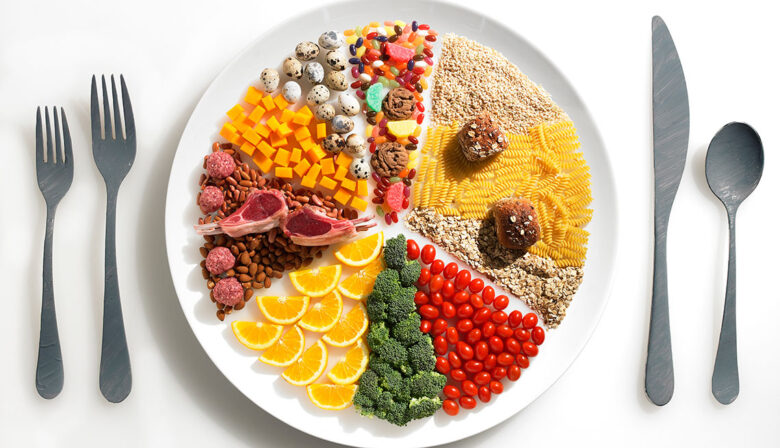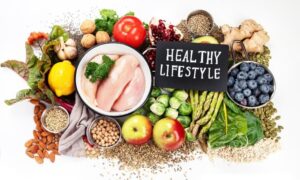Eating well doesn’t have to be complicated. The key to maintaining good health, energy, and weight management is building balanced meals that provide your body with the nutrients it needs. A balanced plate ensures that you’re getting the right combination of proteins, carbohydrates, healthy fats, and micronutrients like vitamins and minerals. Whether you’re cooking at home or eating out, understanding how to create a balanced plate can improve your overall well-being and make healthy eating simple and sustainable.
What Is a Balanced Plate?
A balanced plate is a visual guide to portioning different food groups to meet your nutritional needs. The concept is endorsed by health organizations such as the USDA and the World Health Organization. The goal is to include a variety of food types in the right proportions, ensuring your body receives energy, essential nutrients, and fiber without overconsumption of calories or unhealthy fats.
Typically, a balanced plate consists of:
- Half the plate filled with fruits and vegetables
- A quarter of the plate for lean proteins
- A quarter of the plate for whole grains
- A small portion of healthy fats
Fill Half Your Plate with Fruits and Vegetables
Fruits and vegetables are packed with vitamins, minerals, antioxidants, and fiber. They provide essential nutrients that protect against chronic diseases, support digestion, and improve overall health.
Aim for a variety of colors to maximize nutrient intake. For example, combine leafy greens, orange carrots, red bell peppers, and purple cabbage in your meals. Fresh, seasonal produce is ideal, but frozen or lightly steamed vegetables can also be nutritious options.
Adding vegetables to both lunch and dinner and snacking on fruits throughout the day helps you consistently meet your nutritional requirements.
Include Lean Proteins on a Quarter of Your Plate
Proteins are essential for building and repairing muscles, supporting immune function, and keeping you feeling full between meals. Lean sources of protein include:
- Poultry like chicken and turkey
- Fish and seafood
- Eggs
- Legumes such as beans, lentils, and chickpeas
- Low-fat dairy products like yogurt and cottage cheese
- Plant-based proteins like tofu and tempeh
Variety is key. Rotating protein sources ensures you get different amino acids and nutrients while reducing saturated fat intake from animal sources.
Choose Whole Grains for a Quarter of Your Plate
Carbohydrates are the body’s primary source of energy, but the type of carbs matters. Whole grains are rich in fiber, vitamins, and minerals, providing sustained energy without causing spikes in blood sugar.
Some healthy whole grain options include:
- Brown rice
- Quinoa
- Oats
- Whole wheat bread or pasta
- Barley and bulgur
Replacing refined grains with whole grains supports digestion, promotes heart health, and keeps you feeling full longer.
Add Healthy Fats in Moderation
Fats are essential for hormone production, brain function, and absorption of fat-soluble vitamins (A, D, E, K). The focus should be on healthy fats, which include:
- Avocados
- Nuts and seeds
- Olive oil or canola oil
- Fatty fish such as salmon and mackerel
Limit saturated and trans fats found in fried foods, processed snacks, and certain baked goods. A small portion of healthy fat on your plate enhances flavor, helps nutrient absorption, and promotes satiety.
Hydration Matters
While not a part of the plate itself, proper hydration complements a balanced meal. Water is essential for digestion, nutrient transport, temperature regulation, and overall metabolic function.
Aim to drink water throughout the day, and consider incorporating herbal teas or water-rich fruits and vegetables, like cucumbers, watermelon, and oranges, to stay hydrated.
Practical Tips for Creating a Balanced Plate
- Use Visual Cues: Imagine your plate divided into sections—half for fruits and vegetables, a quarter for protein, and a quarter for grains.
- Cook at Home: Preparing meals at home gives you control over ingredients, portions, and cooking methods.
- Plan Ahead: Prepping ingredients in advance ensures you always have balanced options ready, reducing the temptation to grab processed foods.
- Include Variety: Rotate vegetables, proteins, and grains to prevent nutrient deficiencies and keep meals exciting.
- Watch Portion Sizes: Even healthy foods can lead to weight gain if eaten in excess. Pay attention to serving sizes, especially for grains and fats.
Example of a Balanced Plate
- Lunch: Grilled chicken breast (protein), quinoa (whole grain), and a large serving of roasted mixed vegetables (broccoli, carrots, bell peppers). Drizzle a teaspoon of olive oil for healthy fat.
- Dinner: Baked salmon (protein), brown rice (whole grain), and a spinach salad with tomatoes, cucumbers, and avocado (healthy fat).
- Snack: Apple slices with a handful of almonds or yogurt with berries.
By structuring meals like this, you ensure your body receives all the essential nutrients without overloading on calories or unhealthy ingredients.
FAQs About Creating a Balanced Plate
1. How many servings of fruits and vegetables should I eat daily?
Aim for at least 5 servings of fruits and vegetables per day, with a variety of colors to maximize nutrient intake.
2. Can I follow a balanced plate with a vegetarian or vegan diet?
Absolutely. Replace animal proteins with legumes, tofu, tempeh, nuts, and seeds, and include whole grains and a variety of fruits and vegetables.
3. Do I need to count calories if I use the balanced plate method?
Not necessarily. The balanced plate focuses on portioning food groups rather than calorie counting. However, monitoring portion sizes helps avoid overeating, especially for grains and fats.
4. How can I make balanced meals quickly?
Batch cooking, pre-chopped vegetables, and ready-to-eat whole grains like quinoa or brown rice can speed up meal preparation. Keeping simple recipes and staples on hand also helps.
5. Does a balanced plate support weight management?
Yes. By providing protein, fiber, and healthy fats, a balanced plate keeps you fuller for longer and reduces cravings, making it easier to maintain a healthy weight.
Conclusion
Creating a balanced plate is a practical and effective way to improve nutrition, support overall health, and maintain energy throughout the day. By filling half your plate with fruits and vegetables, a quarter with lean proteins, a quarter with whole grains, and adding small portions of healthy fats, you provide your body with the nutrients it needs to thrive.
Balanced meals don’t have to be complicated or time-consuming—they are about making conscious, informed choices and prioritizing variety, freshness, and moderation. By adopting this approach, you can enjoy flavorful, satisfying meals while promoting long-term health and well-being.




